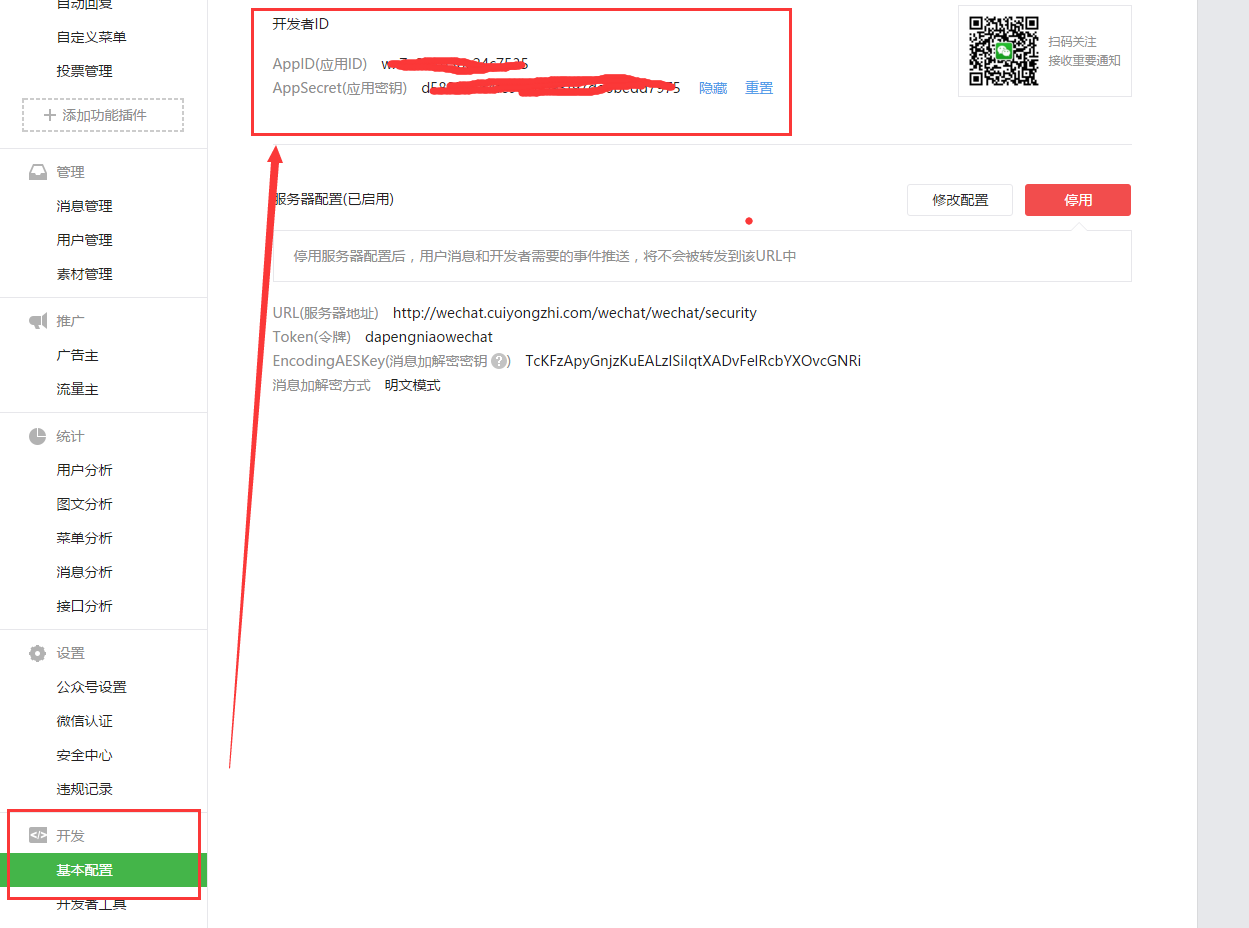(一)token的介绍
引用:access_token是公众号的全局唯一票据,公众号调用各接口时都需使用access_token。开发者需要进行妥善保存。access_token的存储至少要保留512个字符空间。access_token的有效期目前为2个小时,需定时刷新,重复获取将导致上次获取的access_token失效!
(二)token的获取参考文档
获取的流程我们完全可以参考微信官方文档:http://mp.weixin.qq.com/wiki/14/9f9c82c1af308e3b14ba9b973f99a8ba.html 如图:
(三)token获取流程分析
从公众平台获取账号的AppID和AppSecret;
token获取并解析存储执行体;
采用任务调度每隔两小时执行一次token获取执行体;
(四)token的获取流程的具体实现
①获取appid和appsecret
在微信公众平台【开发】——>【基本配置】中可以查看到我们需要的两个参数:
这里我们将他们定义到我们的配置文件【wechat.properties】中,大致代码为:



